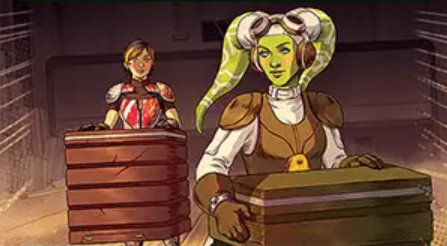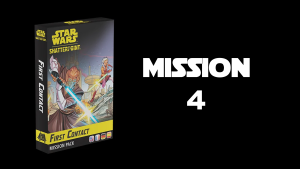Welcome back to The Fifth Trooper’s coverage of Star Wars Unlimited TCG, and welcome to the game actually being out as well! We’ve been providing coverage here in the leadup to launch, but now that the game has actually arrived I’ve been having a lot of fun playing and hope some of you have as well!
For those who might want to get caught up on our previous content, you can check out our past Star Wars Unlimited articles over here — the first article at that link will be whatever’s latest on the blog, SWU or not, while the later ones will be Star Wars Unlimited only!
One thing that I’ve noticed while playing Unlimited is that there are sometimes major differences in how efficiently different players play the game — both in terms of gameplay but also deckbuilding and other external factors — and these efficiency differences can make a big difference in the game’s outcome. This article will go into more detail on how to increase your Star Wars Unlimited efficiency in order to gain the advantage over your opponents!
In–Game Star Wars Unlimited Efficiency
First, we’ll discuss some ways that you can play the game more effectively in general.
Making the Most of Your Resources
One simple way to increase efficiency is to try and make the most of your resources on each turn. The easiest way to do this is to play a card that uses all your resources each turn, but there are some other ways to use your resources efficiently.
“Curving out”
Playing one card that uses all your resources each turn for several turns in a row is sometimes referred to by card game players as “curving out” because it means that you play cards on an increasing cost curve — on the first turn you might play a two-cost card, then on the second turn a three-cost card, on the third turn a four-cost card, and so on. This can be a simple way to gain an advantage against opponents who make less efficient plays.
For example, if you play a four-cost unit on turn three and the opponent plays a three-cost unit and doesn’t make use of their last resource, you will probably gain some advantage because a four-cost unit generally represents more value than a three-cost unit (though there may be some exceptions). While the advantage you gain there isn’t necessarily enough to win the game, every little bit helps!
Fixing Your Curve with Leader Abilities
Even if you’re not necessarily able to curve out exactly, some leaders have abilities that cost a resource but provide relevant benefits. If you end up playing slightly below curve, you can use your leftover resource to use one of these abilities and gain some value back.
For example, Luke Skywalker, Faithful Friend has a leader ability that allows you to spend a resource to put a shield token on a Heroism unit that you played that turn. Playing a below-curve unit but then shielding it can be a good way to gain value with Luke — in fact, it’s sometimes better than spending all your resources for an on-curve unit!
Luke is not the only leader with an ability like this — several current leaders (and probably some leaders for future sets as well!) have abilities that cost a resource, allowing you to add another source of potential value to your deck. Further, these abilities are nice in that they do not cost a card — yes, Moment of Peace might provide a similar effect to Luke’s ability and with more flexibility, but it also costs a card to use!
Playing Multiple Cards in a Turn
As you add more resources across the course of the game, you get more prospects of using multiple cards in a single turn. While one can potentially play two one-cost units with the two resources you have on the first turn of a game, this is comparatively rare — but once you have five or six resources, playing multiple cards with your resources is much more achievable.
It can be worth thinking about how you’re going to use these resources in advance. For example, if you’re about to have five resources and don’t have a five-cost card, you might want to play a three-cost and two-cost card — and that in turn means that you might want to resource accordingly, perhaps keeping a lower-cost card in hand even later in the game to act as a potential complement to a more expensive play that doesn’t quite use all of your resources.
Making the Most of Your Cards
Cards themselves can also be used efficiently or inefficiently. While card advantage — having more cards available than your opponent — is still an advantage in Star Wars Unlimited, it isn’t as much of a critical factor as in some other games because drawing two cards per turn “naturally” gives you more options than games where you only draw one card each turn. However, card advantage can still be a relevant aspect of gameplay in Star Wars Unlimited.
Card Draw and Discard
One way to get card advantage is to play cards that either draw you multiple cards or cause your opponent to discard cards. In Unlimited, most card draw cards are not necessarily all that good at this time, and the ones that are are generally “bonuses” on cards you might already want to be running rather than “dedicated card draw”.
However, some card draw can still be helpful, especially with decks that tend to find themselves low on cards. For example, Black One, Scourge of Starkiller Base can be a nice option to refill your hand in a Han Solo, Audacious Smuggler build that might otherwise get low on cards as a result of using Han’s ability to make temporary resources.
Effects that can cause your opponent to discard cards can also be a way to gain card advantage. For instance, if I use K-2SO, Cassian’s Counterpart to trade with an enemy unit, then use his When Defeated effect to cause my opponent to discard a card, I just used one card of my own to take out two of the opponent’s — the unit K2 traded with and the card he discarded from hand.
This brings me to my next topic — the “two-for-one”.
Getting “Two-for-ones”
A common concept across several card games is the “two for one” — a situation where one card of your own answers two cards from your opponent. For example, if you play an Imperial Interceptor, defeating an enemy Alliance X-Wing with your When Played ability, then later attack into another X-Wing and trade with it, you just scored a “two for one” — your one card took out two opposing cards.
Another way to get a two-for-one is to defeat an opposing unit that the opponent has played one (or more!) upgrade cards on, thus defeating both the unit itself and the upgrade (or upgrades).
For instance, if my opponent plays an upgrade card on a unit that I then defeat with Vanquish, I’ve actually taken out two cards — the unit and the upgrade — while spending only one card of my own. To mitigate this, playing upgrades on your leader instead of on normal units can be a good tactic — many effects that would defeat or disrupt a unit can’t be used on a leader, so upgrading your leader reduces the chance of getting hit by a two-for one.
Also, two-for-ones are not the cap! In the right circumstances, you can potentially get a three-for-one, four-for-one, or even more — and doing so will generally be a good way to generate card advantage and use your cards more efficiently than your opponent.
Stopping Your Resourcing
Another simple way to get the most out of your cards is by declining to add a card from hand to your resources at the end of a turn. Since cards that are added to resources generally aren’t usable as cards, if you stop adding more resources you will essentially be drawing two cards per turn that you can actually play, while a player who is drawing the default two cards per turn but then keeps adding a new resource every turn will in essence only draw one playable card per turn.
In general, I recommend more or less always resourcing until your leader can deploy, and then maybe resourcing a bit beyond that, depending on your deck’s cost curve, the cards you have in hand, and the particular game situation. Once your leader can deploy though, whether to resource becomes much more of a choice — and sometimes one where the right decision is to hold on to your cards instead.
Making the Most of Your Base HP
This last category might seem odd, but base HP can be used efficiently or not as well! An old saying in card games goes, “Only the last point of life matters.” What is the difference between winning with 1 HP left and winning with 30? There is no difference, you have won either way and base HP isn’t even a relevant tiebreaker in a tournament!
(Important note: this section does NOT apply to the Twin Suns format, where base HP is more important!)
Rare Bases are (Often) Worth It
The first practical takeaway from this is that playing a 25 HP rare base is often worthwhile — yes, you lose 5 HP compared to running one of the common bases, but that can often be very worth it in exchange for an Epic Action that can have a big effect on the game — in general, I consider rare bases the “default” in constructed play and often strong in Limited as well!
The 30 HP bases, on the other hand, are kind of a weird “tech” choice that you might run in order to have a better chance against aggro — but even then I might well prefer the 25 HP option to try and gain an advantage with the Epic Action!
Don’t Worry Too Much About Damage
Next, using your base HP efficiently means that you should not be overly concerned with losing base HP. To some degree, taking damage is expected and normal!
For example, if you have a heavy ground presence and your opponent has a heavy space presence, you might be worried about going space to defend your base — but it might well be a better choice to just focus on the ground and damaging your opponent faster than they damage you! Ground units are more efficient than space units, after all…
Similarly, I tend to think that going to unusual lengths to heal is generally not worth it. Healing can certainly be helpful, but (like card draw!) it might be best in situations where it’s a side benefit of a card you already want to play (like Yoda, Old Master in a deck with lots of Force synergy) rather than something you run dedicated cards for.
Out-of-Game Star Wars Unlimited Efficiency
Another interesting way to improve your efficiency is through out-of-game decisions. The actual match is only part of what you’re doing, after all!
Putting Better Cards in Your Deck
One way to be more efficient than an opponent is simply by having better cards in your deck!
If both players curve out optimally but the first player plays Battlefield Marine, Echo Base Defender, and Kanan Jarrus (quite efficient cards at two, three, and four resources respectively), while the second player plays Underworld Thug, Volunteer Soldier, and Regional Sympathizers (quite inefficient cards at two, three, and four resources respectively), the first player will have a significant advantage — even though both players played cards on curve, the first player’s cards get more value for their cost!
Thus, putting better cards in your deck can be an effective method of playing more efficiently. This is most obvious in constructed formats, where building a better deck can give you an advantage over someone who has made worse deckbuilding choices.
However, running better cards is also an option in Limited play! In Draft or Sealed, making better choices as to what cards to draft (or choose from your pool) can give you an advantage in game. For more on that, check out my previous article here covering Draft and Sealed play!
Avoiding Aspect Penalties
While Star Wars Unlimited allows you to play cards outside your aspects at a cost penalty, paying aspect penalties is usually bad in constructed play. (In Limited it may be more reasonable depending on situational factors.) After all, playing cards for an increased cost guarantees they’ll be less efficient than the same cards in a deck that can play them for two (or more!) cheaper.
Thus, I generally recommend not playing cards with aspect penalties in constructed play — and even in Limited you should be careful about including out of aspect cards! There are perhaps some exceptions to this rule, but I think that at least starting out it makes sense to just avoid out of aspect cards.
General Game Knowledge
Another way to improve your Star Wars Unlimited efficiency is to familiarize yourself more with the game as a whole. There are several different areas where it would perhaps be relevant to learn some
Knowing What Cards Do
Knowing what the cards in the game do can help you play more efficiently by allowing you to properly react to cards on the field. I’ve seen situations where players have played cards that don’t work well for the current situation because they simply don’t know what their opponents’ cards do!
This can both involve not knowing what a card you haven’t seen on the field does (for example, getting hit hard by Overwhelming Barrage from hand), but also situations where you don’t understand or misread cards that are actually on the board.
Personally, I quite suggest reading any unfamiliar cards the opponent might have played to avoid being potentially taken by surprise. As you play more and get more familiar with the cardpool, you’ll also get a better sense of what options are available in the game — for both yourself and potential opponents!
Knowing What Decks are Popular
Another relevant piece of game knowledge is knowing what decks are popular in the meta and what cards they are likely to play. This can help you plan in advance when building your own deck to avoid potential pitfalls.
For example, let’s say you are in a meta that you know to have lots of fast and aggressive decks. In that environment, playing a really slow deck like an endgame-focused Emperor Palpatine, Galactic Ruler build might not be a good idea — the other decks might be too fast for you! Instead, you might want to play something that has better tools for dealing with early threats — and if you’re insistent on playing Palpatine, you should perhaps make sure to include some cards to help deal with early aggression.
Knowing what decks are popular can also help you play effectively by avoiding your opponent’s best plays. For instance, if you know your opponent is playing a lot of exhaust effects, you probably don’t want to play expensive upgrades for your units — upgraded units are extra vulnerable to exhaust effects.
Sleep and Other Preparation
Lastly, one factor that is often overlooked is getting good sleep, drinking water, and so on! These “basics” can be important in staying on top of your mental game and will help prevent you from making silly mistakes. These factors can be especially relevant at big tournaments, where one might play many games in a row without particularly long breaks — for more on this, see this article I wrote some time ago on “tournament fatigue”.
Final Thoughts
Hopefully, this overview has provided some useful ideas for how to improve your Star Wars Unlimited efficiency! This is of course painting in broad strokes — I could go into much more detail on many of these topics — but this should hopefully provide a useful overview for players who want to figure out more about playing Star Wars Unlimited efficiently.
Stay tuned for more Star Wars Unlimited coverage here on The Fifth Trooper! Now that the game has actually released, I expect there will be some quite interesting developments to cover as things progress…





